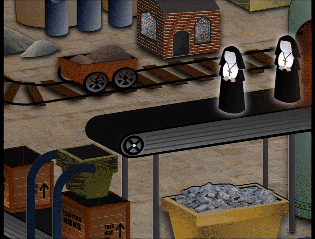We may have set foot upon the surface of the moon and sent probes to the furthest reaches of the Solar System, but in terms of space exploration we have only just begun to scratch the surface.
For the moment, the prospect of interstellar travel eludes us. Nevertheless, although crossing the vast empty voids of the universe is beyond our capabilities, it is not beyond our imaginations. Engineers are confident that some time in the future we will develop the technology to journey to distant stars.
Perhaps it could be sooner than we think. Scientists are already looking at a number of different options, including ion drives, anti-gravity motors and interspatial warp matrix interfaces. But these technologies are still highly theoretical.
Project Pogo
However, conventional science might yet provide a means for us to explore the galaxy, if Project Pogo is given the go ahead. Project Pogo uses a revolutionary new space vehicle, the Pogo Rocket, which employs a two-tier system of powerful springs to launch itself into orbit.
The first spring, the 'launch spring', is over six miles high and requires five hundred heavy-duty winches to compress it. This spring provides the initial thrust to fire the Pogo Rocket into space.
Once in orbit, the launch spring will be jettisoned and the capsule will head towards the moon, impact with it and bounce clear of the surface using the smaller 'flight spring'. It will then head to Mars and repeat the process, bouncing from the surface and heading on towards Jupiter. And so on, and so forth until it is out of the solar system and hurtling towards another galaxy.
Each time it bounces from a planetary surface, it will - in a way that is completely contrary to the laws of physics - gather momentum and increase its speed by a factor of ten. Thus, in just a few years time, mankind could find itself literally leapfrogging across the universe.
Obstacles to overcome
There are, inevitably, a few obstacles to overcome first. No one is quite sure if the Pogo Rocket will be able to find sufficiently solid planetary surfaces from which to bounce. The moon and Mars should not be a problem, but Jupiter is made largely from gas, and most experts agree that Saturn is far too wet and sloppy.
But these uncertainties can be fairly easily overcome by making use of the planets' satellites. A far greater problem will arise from the incredible speeds the Pogo Rocket will be capable of. By increasing its velocity with each bounce, it could conceivably reach the nearest galaxy within a few years. But, as yet, no one has figured out a way to stop it.




















 Inside the Nun Factory: How it Works
Inside the Nun Factory: How it Works Sofas Are From Mars...
Sofas Are From Mars... Ken's News and Fags
Ken's News and Fags Tattoo Express
Tattoo Express Bing Crosby Boxing
Bing Crosby Boxing Empire of the Flowers
Empire of the Flowers Sandals
Sandals Professional Scarer
Professional Scarer Cable Rot
Cable Rot Trouser Forecast
Trouser Forecast


